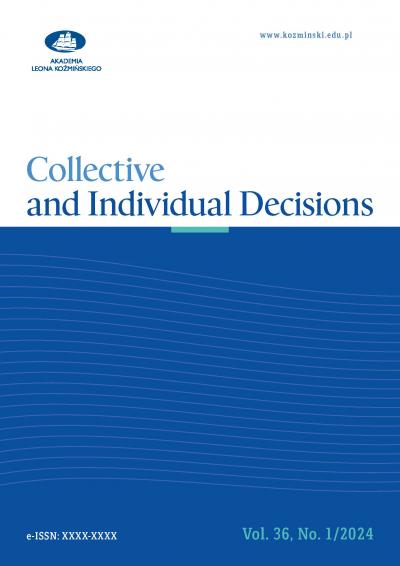Metody głosowania w organizacjach międzynarodowych
Grzegorz Lissowski
Instytut Socjologii Uniwersytetu Warszawskiego
2014-03-17 (19) Decyzje
DOI 10.7206/DEC.1733-0092.1








